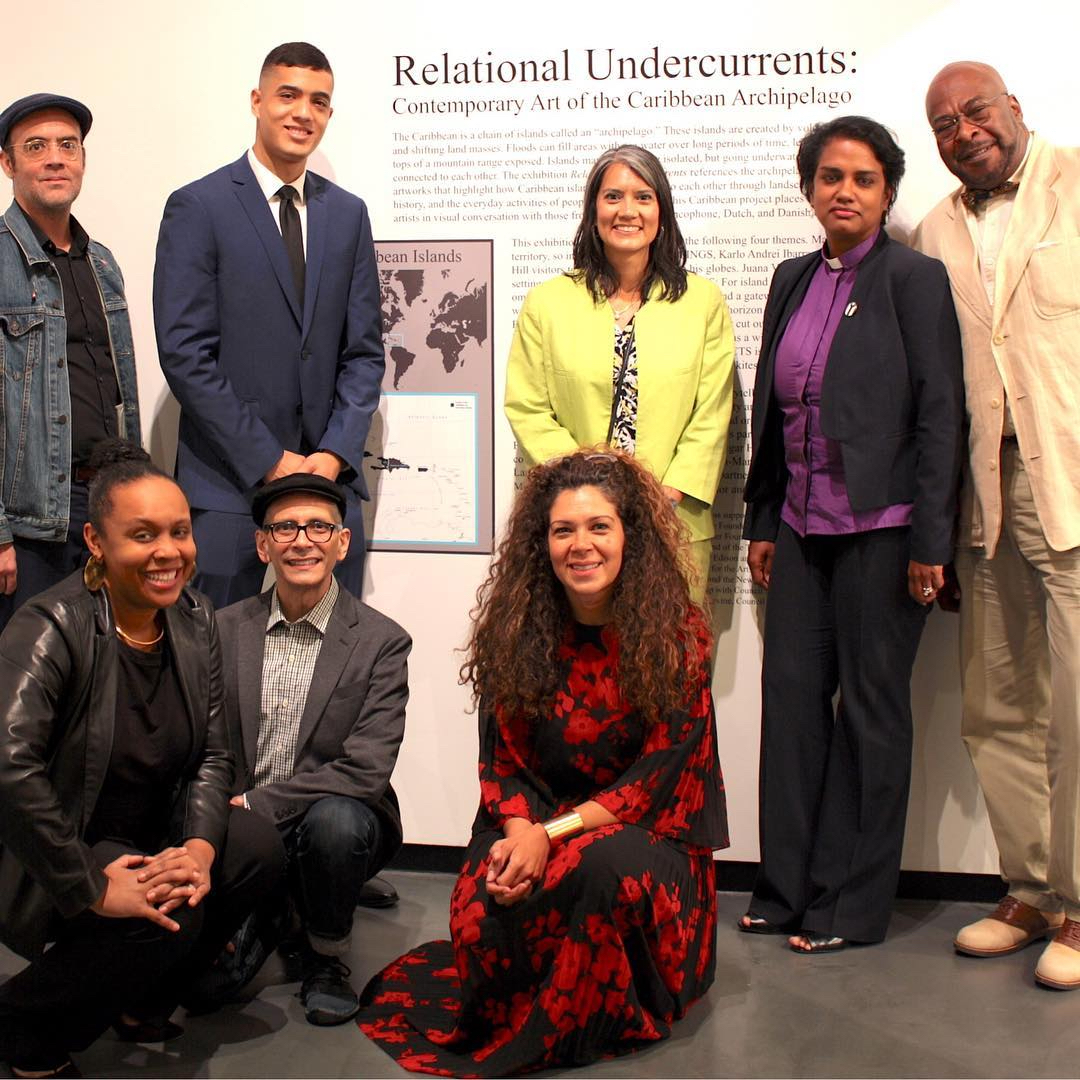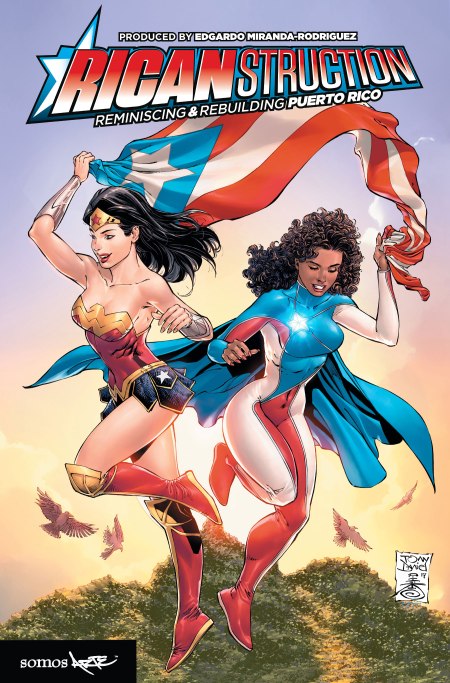

Individuals and organizations around the globe have come together to demonstrate the power of crowdfunding campaigns launched to provide disaster relief to Puerto Rico. Ineffective federal and local aid contributed to a death toll that has swelled to almost 3,000 people (if not more) after Hurricane María struck on September 20, 2017. This follows an original headcount of only 64 perished, praised by President Trump during his visit to the island archipelago nearly two weeks after agriculture and infrastructure were ravaged.
Noteworthy arts and humanities organizations have mobilized their communities to provide lacking resources. They’ve flexed their creativity and innovation muscles to inspire constituents to partner with them in response to overwhelming need. These projects vary in scale and scope but managed to succeed in clever and exciting ways that should be noted by philanthropists, fundraisers and nonprofit leadership. What follows are just a few examples of humanitarian aid initiatives designed with similar goals and objectives: all of them leveraged creativity and celebrity to raise awareness and inspire giving.
The Northern Manhattan Arts Alliance (NoMAA) cultivates, promotes and supports the works of artists and arts organizations in northern Manhattan. NoMAA served as a partnering organization for Relational Undercurrents: Contemporary Art of the Caribbean Archipelago, an exhibition held at the Sugar Hill Children’s Museum and Columbia University’s Wallach Gallery. It included works by artists from Puerto Rico, showcasing multiple linguistic and colonial narratives expressed in visual mediums. The exhibition hosted a symposium that featured a number of presentations such as “Art and Debt in the Puerto Rican Archipelago” by scholar Frances Negrón-Muntaner.
NoMAA organized a screening of the documentary Puerto Rico: Hope in the Dark, at the Sugar Hill Children’s Museum on the last day of this exhibit. The 47-minute film was produced and edited by Pace University students in response to the devastation.
Eighteen film and media students and their administrators traveled to Puerto Rico six months after the hurricane hit to compile testimonials and interviews in multiple municipalities. This unprecedented project captured the generosity and resiliency of the Puerto Rican people, and has generated greater awareness and support through its partnership with Hispanic Federation’s UNIDOS campaign, which I’ll come back to.
The screening was followed by a panel discussion featuring the documentary’s associate producer Gabriel Rivera, Arnaldo J. López of Pregones/Puerto Rican Traveling Theater (PRTT), the Revered Damaris Whittaker and Sabas Whittaker of Ft. Washington Collegiate Church, and Mónica Tavares of Hispanic Federation. Each panelist discussed their organization’s contribution to recovery efforts in the wake of federal incompetence, sharing both the triumphs and challenges of their community-fueled endeavors. Telltale patterns and trends in organizational communications and its impact on fundraising were revealed.


I moderated the panel and began by mentioning my participation in the graphic novel anthology Ricanstruction: Reminiscing and Rebuilding Puerto Rico, organized by Edgardo Miranda-Rodríguez, creator of La Borinqueña, a popular Afro-Puerto Rican superheroine. This collection of graphic novel narratives provided the perfect scenarios for artists to imagine better futures for Puerto Rico and has raised $150,000 to date. Miranda-Rodríguez was in San Juan on the same night to announce the first round of nine $10,000 grants awarded to grassroots organizations in Puerto Rico as a result.


SMWEB012B000_let
Arnaldo J. López of Pregones/PRTT described how the theater company collected funds for a series of $500 no-strings, micro-grants distributed to individuals and organizations as part of its Hurricane María Relief Drive for Artists in Puerto Rico, reaching as many people as possible. Pregones/PRTT awarded a total of $100,000 in these special grants, which were made possible through donations from their supporters, pledged box office revenues and matching funds awarded by foundations. Some 259 donors in 96 cities (including London) and 29 states in the U.S. contributed to this total—an impressive feat.
Ft. Washington Collegiate Church energized its arts-infused congregation and support base to amass resources in their faith-based community, as reported by the Reverend Damaris Whittaker and her husband Sabas Whittaker. The result has been six humanitarian trips to the main island, where clergy and congregation members have repaired roofs and other structures, launched a pollination project to repopulate bees for agricultural sustainability after they were wiped out, and planted organic crops to support the residents and businesses of Orocovis, and in Humacao, where the Reverend Whittaker was born.
Hispanic Federation’s UNIDOS Disaster Relief & Recovery Program to Support Puerto Rico has committed 30 million dollars to assist with recovery, serving all 78 municipalities on the island to date. UNIDOS has distributed 7.4 million pounds of water, food and other goods via 25 coordinated relief flights that have also delivered water filtration equipment, medical supplies, solar panels, solar lamps and emergency personnel to those affected throughout the islands. A total of 79 community groups in Puerto Rico received grants through UNIDOS to begin rebuilding. Aid is ongoing and won’t end soon.
Celebrity endorsements contributed to the large-scale success of Hispanic Federation’s campaign, by increasing revenue through the participation and sprawling media platforms of stars such as Lin-Manuel Miranda, Jennifer Lopez and Alex Rodriguez. Donations alone arrived from over 60 nations, illustrating the potential of global crowdfunding power to lift those in need. A major boost to the campaign’s success was Miranda’s “Almost Like Praying” project, a downloadable single featuring Marc Anthony, Rita Moreno, Luis Fonsi, Rubén Blades, Gloria Estefan, Fat Joe, John Leguizamo, Gina Rodriguez, Gilberto Santa Rosa and many others, recorded in multiple cities and sold for just $1.29.
The scale and revenues of these efforts may vary, but they share one critical trait that contributed to their success: the activation of community, whether local, global or both. Crowdfunding campaigns will increasingly depend on creative endorsements, strategy and messaging as traditional philanthropy contracts and expands with the economy. Even more critical is understanding a community’s values and how to align “calls to action” with them to drive giving. These initiatives all demonstrate the combined power of local and global stakeholders who chose to make a difference in the wake of devastation.
***
Charlie Vázquez is an arts and culture consultant with over thirty years’ experience in the cultural sector, as an author, musician, fundraiser, festival planner, technology strategist, exhibit developer, and communications coordinator. You can contact him through LinkedIn.


